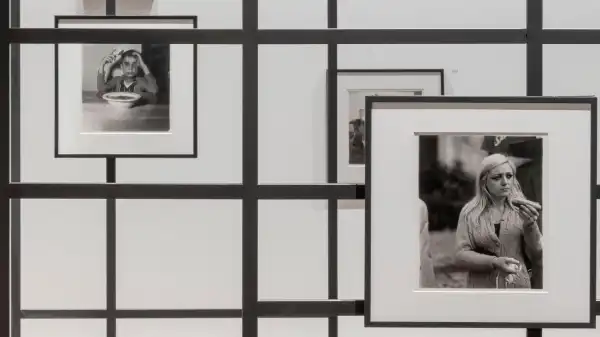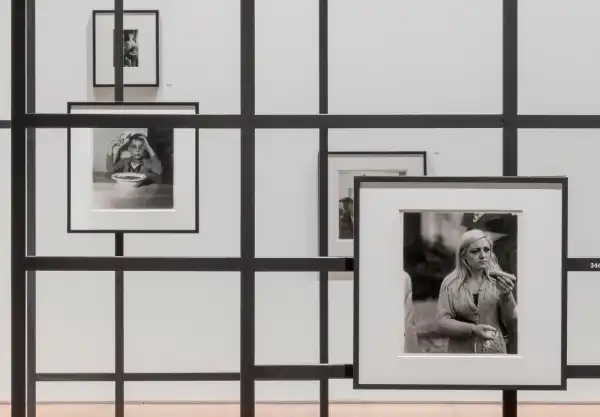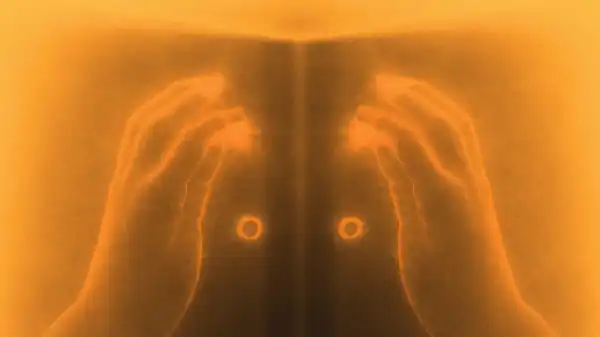
Save this storySave this storySave this storySave this storyYou're reading the Goings On newsletter, a roundup of what we're watching, listening to and doing this week. Sign up to get it sent to your inbox.
“Constellation,” the Diane Arbus exhibition at the Park Avenue Armory (through August 17), features more than four hundred and fifty famous, lesser-known, and completely unknown photographs from her brief career, which ended with her suicide in 1971 at the age of forty-eight. Controversy surrounded her posthumous exhibitions and publications, and although they have largely given way to profound acclaim, Arbus is not an easy woman to love. Her work remains gritty, provocative, and beautifully dark. Curator Matthieu Humery’s installation transforms the Armory into something like a construction site, a dense network of metal structures lined with framed photographs at various levels and strategically placed mirrors. The immediate effect is both stunning and captivating: an amusement park ride you never want to leave, with a startling image at every turn.

Detail of the painting “Diane Arbus: Constellation”, 2025, Park Avenue Armory.
Artworks © The Estate of Diane Arbus / Courtesy of the Maja Hoffmann Collection / LUMA Foundation; Photography by Nicholas Knight
All of the photographs in the Arsenal, now in the collection of the LUMA Foundation of Maja Hoffmann, based in Arles, France, are proofs made by photographer Neil Selkirk, the only person with permission to make posthumous prints from Arbus’s negatives. Selkirk preserved one image from each of the Arbus series he reproduced, an invaluable archive given his long and dedicated engagement with the material. Because “Constellation” includes all of these photographs, it is not only the largest Arbus exhibition ever held in New York, but also its most revealing and eccentric.
Humery makes the most of this eccentricity, grouping photographs of different sizes and eras and juxtaposing the series (nudists, circus performers, mental-hospital patients) with less visible magazines and images from the 1972 Aperture monograph that continues to define Arbus. The result can be unsettling, as it should be. The small Self-Portrait, Pregnant, New York 1945, in which Arbus peers at herself, stripped to her underpants, in a full-length mirror, hangs next to her photograph of James Brown backstage at the Apollo in 1966, flashing a wide, unsettling show-biz smile. Celebrities including Mae West, Norman Mailer, Jayne Mansfield, and Susan Sontag, most of them commissioned, appear alongside anonymous men, women, and children at Coney Island, Central Park, Fifth Avenue, and summer camp. Arbus pays close attention to them all, a look that is more curious than concerned. But Arbus’s curiosity is not idle; it is intense, all-consuming. That her appetite was insatiable is especially evident in the Arsenal, where she is omnipresent, and where mirrors mounted on the backs of framed paintings reflect your own curious eyes. (Another enormous mirror doubles as the exhibition’s back wall, creating a funhouse effect.) Selkirk, who studied with Arbus until her death, says she was not judgmental. It is our job to see her work in the same way. — Vince Aletti
Sourse: newyorker.com






